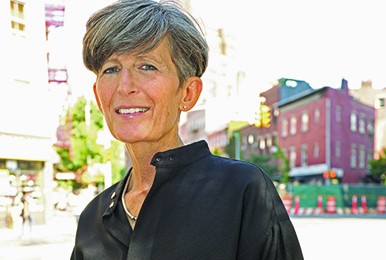
Thirty years ago, Theresa Galvin was just beginning her career as a NYC-based dietitian when an AIDS-designated unit opened in the long term care facility where she worked. Despite what she calls the "happenstance" aspect of her work in HIV/AIDS care, it is a role to which she has developed a deep connection. Galvin is now the community HIV nutritionist and supervisor of nutrition services for Village Care Certified Home Health Agency and serves as the Ryan White grant program manager. Despite advances in HIV/AIDS care, Galvin says, "We still have an epidemic. I know people think that’s a radical statement, but I only know what I know."
Q: How has your work evolved over the course of your career?
It was the 1980s and the beginning of the AIDS epidemic. The expectation at the time was patients admitted (to my facility) were merely sent there to live out the remainder of their short lives. Today the face of HIV/AIDS presents differently: Replacing “clear and imminent death” of the early days is now “living with HIV,” but typically with a host of multiple co-morbidities. This poses new challenges to treatment, management and outcomes.
Q: How has your work made a difference in your community?
The difference is measurable: fewer AIDS-related deaths, fewer people becoming homebound, less malnutrition and wasting, more medications and overall improvement in immune functioning. And since HIV and malnutrition essentially impact the same components of the immune system, I like to think that nutrition has been a big part of that success.
Q: Is there a particular anecdote that would illustrate why this work is so important?
If I had to pick one it would be a patient I called the “Marlboro Man.” I worked with him over the course of a month. At what would be my last clinic visit with him, he broke down and cried. He had just seen the doctor: His T cells were “like a handful of M&Ms,” and the AZT wasn’t working anymore. He was fearful, alone and apparently had endured his journey alone and in silence. That’s what HIV stigma looks like.
A week later he was in the ICU, on a ventilator. I went right up to see him. I know that a month is not a long time to know someone, but in those days it was all about the quality of time spent with a patient. Unable to speak but totally lucid, he tried first to speak, then to write in the air. He then got teary-eyed and signed to me. At the time I was living across the street from a School for the Deaf, and stopped there after work, trying to repeat his gestures. The guy smiled and said, “It means I love you.” I was overcome by emotion.
The next day Mr. Marlboro was gone. This, like so many patient losses over the years, taught me a lot of life lessons — it shaped my perspective on living, dying and impermanence; the importance of quality versus quantity; and a great deal of compassion, humility and gratitude for the simplest acts of kindness. It is something I like to think I carried on with me in patient care.
Q: What do you find most rewarding about your efforts?
The circuitry of birth to death is so very profound — it is the one thing that all humanity shares. Every HIV-infected person encountered in my almost 30 years of HIV/AIDS care touched me in their special, indelible ways. It has truly been a privilege to companion them on their most intimate of travels that, for many, brought them to their journey’s end.
Q: Looking ahead, how would you like to see your project develop or grow?
[Editor's note: Galvin was interviewed at the time of the government shutdown.]
For me, thinking ahead to any day beyond the current day seems overwhelming and incomprehensible. And if it feels that way to me, then it is surely magnified 20 more times for the patients we care for. I may not have a lot of control over what is happening at the government level, but I do have control over what is happening at my own level. We must reinvent ourselves given the current climate — for me that means donning my old hat of AIDS advocacy with a new and reignited fire and asking my colleagues to join me.
